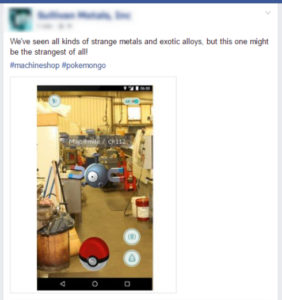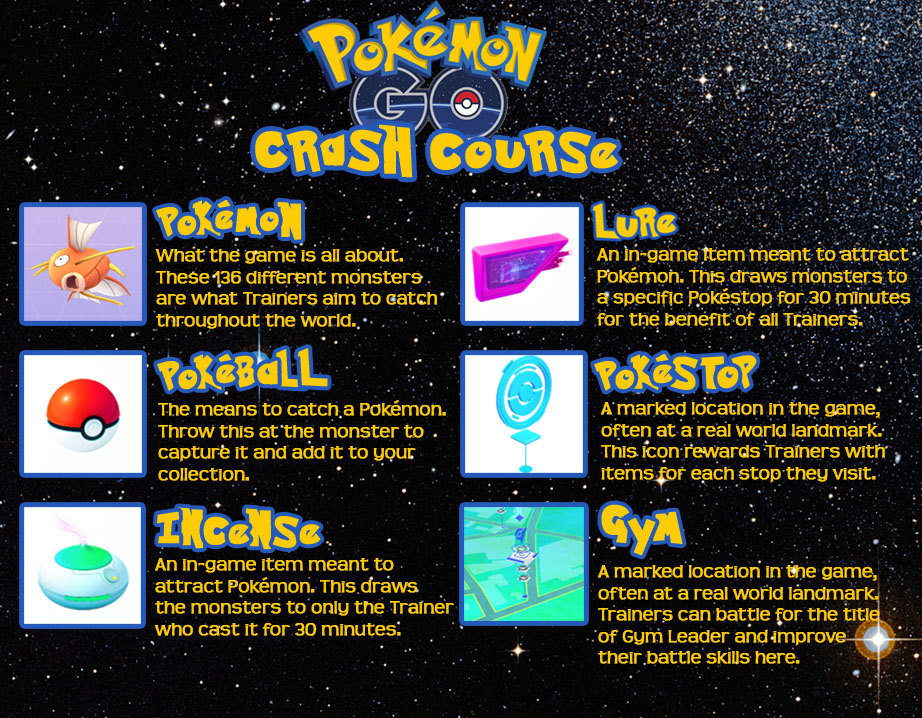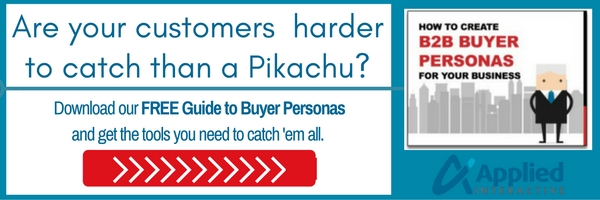At this point, just about everyone knows about Pokémon Go. There are a plethora of articles all about the wildly popular mobile game app; the startlingly small company behind it, Niantic; and thousands of tips and tricks players have picked up on how to play, gain the advantage on fellow players, and try to be the very best (like no one ever was).
In the incredibly small chance that you haven’t heard of the app, or just haven’t played for yourself yet, here’s a quick breakdown:
The app has exploded onto the scene with record-breaking download rates and a surprisingly diverse audience. The game’s popularity can be attributed to its broad appeal that capitalizes on the nostalgia of older generations who grew up with the original cards and handheld Game Boys, tech enthusiasts eager to see long-awaited AR technology in action, as well as the newer generations just starting their Pokémon journey with the latest iteration of the massive multimedia conglomerate. This startlingly diverse customer base has created significant buzz in a marketing world that is currently focused on hyper-targeted marketing efforts that aim to reach very specific, narrow demographics. While players have demonstrated an unprecedented level of excitement for this latest gaming innovation, some of the most enthusiastic and creative supporters have been the businesses and marketers looking to capitalize on the Pokémon craze.
Immediate results of the app’s success have been quantifiable and clear.
Because of the real-world connections to the game, plenty of businesses have found themselves lucky enough to be dubbed a Pokéstop or Gym and watched as the foot traffic exponentially increased. Even those in the general vicinity of these in-game reward points have reaped the benefits, and many are taking the chance to cash in on this phenomenon before it’s gone.
The quickest and easiest way to get your business involved in the Pokemon craze is through social media. Restaurants and retail stores have their employees snap a screenshot of the Pokémon lurking in their locations, post it to Twitter and Facebook with the appropriate hashtags, and watch the player crowds appear—especially if there’s a Pokémon other than the annoyingly common Pidgeys, Weedles, and Rattatas. Some have created Pokémon-related promotions, offering discounts or free items based on team affiliation, gym leadership, types of Pokémon caught, and so on. Photos of signage and products for these events posted to social media have also been positively received, and many businesses have been reporting significant sales increases from the exploring players. Those truly dedicated to building the maximum amount of traffic, particularly during typical business lull periods, have made accounts for their company and advertise Lure-dropping on nearby Pokéstops to draw people in with catching more Pokémon as an incentive.
The marketing possibilities are real and effective.
Niantic has enjoyed widespread success of their game thus far with near-nonexistent advertising and campaigning, thanks to the fame of the Pokémon name. But in order to keep their momentum going, they’ve started developing sponsored locations with McDonald’s in Japan, turning their 3,000 or so restaurants into “sponsored” Pokéstops. If this model proves successful, Niantic has a continuous source of income to support the free app, and the businesses paying to be a marked destination enjoy a Pokémon-fueled boost in sales and traffic.
This promotion style is vital to preserving the functionality of the app, unlike the pop-up ads of some of their competitors. The market has become so oversaturated with pop-ups and flashy ads meant to grab your attention that the world has gotten tired of it. Audiences have been desensitized and have learned to block them out, sometimes quite literally through the use of ad-blocking extensions. So how do you market to people that don’t want to be marketed to?
- Generalization. The beauty of Pokémon Go is how incredibly broad the participating audience is. There’s no need to cherry-pick demographics based on any of their personal characteristics (e.g., age, ethnicity, social class) and pander to prior trends. Do they play Pokémon Go? There’s the audience. It’s refreshingly basic compared to most marketing campaigns, but where such sweeping generalization would normally dissipate and miss its target, Pokémon Go is creating its own community that single-handedly keeps the buoyancy needed for success.
- Subtlety. As stated before, pop-ups and other incessant ad placements are seen as annoying and will do more to frustrate your audience than entice them. Effectively reaching an audience requires a change in marketing style. Sponsored reward locations seem to be the perfect solution for Niantic, and businesses can potentially aim for a general category icon on the map, function as a Pokéstop in the game, or even just a business logo identifier with a short description. Players out hunting for elusive Pokémon would be able to identify nearby businesses or food options right from their phone without having to close the app and waste precious egg-hatching or Pokémon-catching time. It’s as simple as a small golden arch logo for a nearby McDonald’s, or a hanger icon for a clothing store
- Behavior, not branding. The most important thing to remember is that targeting should be geared toward the behavior, not the brand. Audiences should be able to indulge in activities they’re already doing in order to lead them directly to your product or business. If they’re already going to be catching a Pokémon in your store, why not offer them 5–10% off their purchase if they show it to the cashier? This gives them incentive to shop around, and may be the deciding factor in whether or not they complete a purchase. If you have multiple locations, this strategy can be applied to the different Teams: offer 10% off to Team Mystic members at one location, 10% off to Team Valor at another, and 10% off to Team Instinct at a third. This builds off the sense of identity and unity the app is already creating, and connects your business with the community of players. Call-to-action styles are perfect for this (e.g., “Show us your Pokémon caught in-store for 10% off!” or “Team Mystic gets a free coffee with any food purchase today!”).
Marketing opportunities are not limited to local B2C customers.
While the potential marketing applications of Pokémon Go may seem limited to a localized B2C customer base, there are still plenty of unexpected ways for businesses to take advantage of the opportunities to grow their audience. With an average of more than 10 million daily users on the app, smart businesses are already exploring nontraditional ways to capitalize on the trend.
 Connect with your audience. There are a variety of ways to tap into your audience’s sense of humor while staying in line with brand messaging. One of the simplest is through the use of clever in-game screenshots posted to social media:
Connect with your audience. There are a variety of ways to tap into your audience’s sense of humor while staying in line with brand messaging. One of the simplest is through the use of clever in-game screenshots posted to social media:
- Share in community identity. From sports to politics to soft drink preferences, human nature drives us to join a “tribe” and adhere to its identity. By adopting strategies that play into the team-based structure of Pokémon Go, you show your audience you are “one of them,” a part of their community, and worthy of instantly engendered loyalty and trust.
- Show personality. B2B companies, especially in less “glamorous” industries like manufacturing, consistently struggle to differentiate themselves from their competitors. Showing personality and reaching out to your audience gives you a chance to stand out and make a more memorable connection. Addressing an audience directly in this manner makes the viewer feel less like an advertising target, and builds a stronger, more genuine relationship.
Capitalizing on the Pokémon Go craze requires just a little bit of smart marketing work for a larger payoff for both B2C and B2B companies. Some are lucky enough to have been designated locations that automatically attract players interested in catching Pokémon, while the less fortunate have been working on targeted advertising and deliberately associating themselves with the app. By implementing creative, generalized advertising related to the app and paying attention to the audience response, businesses can associate themselves with the community and successfully gain social media traffic, customer interest, and connect with their audience. Don’t be afraid to show personality and get creative with marketing styles; it’s important to take advantage of the opportunities before they are gone.


